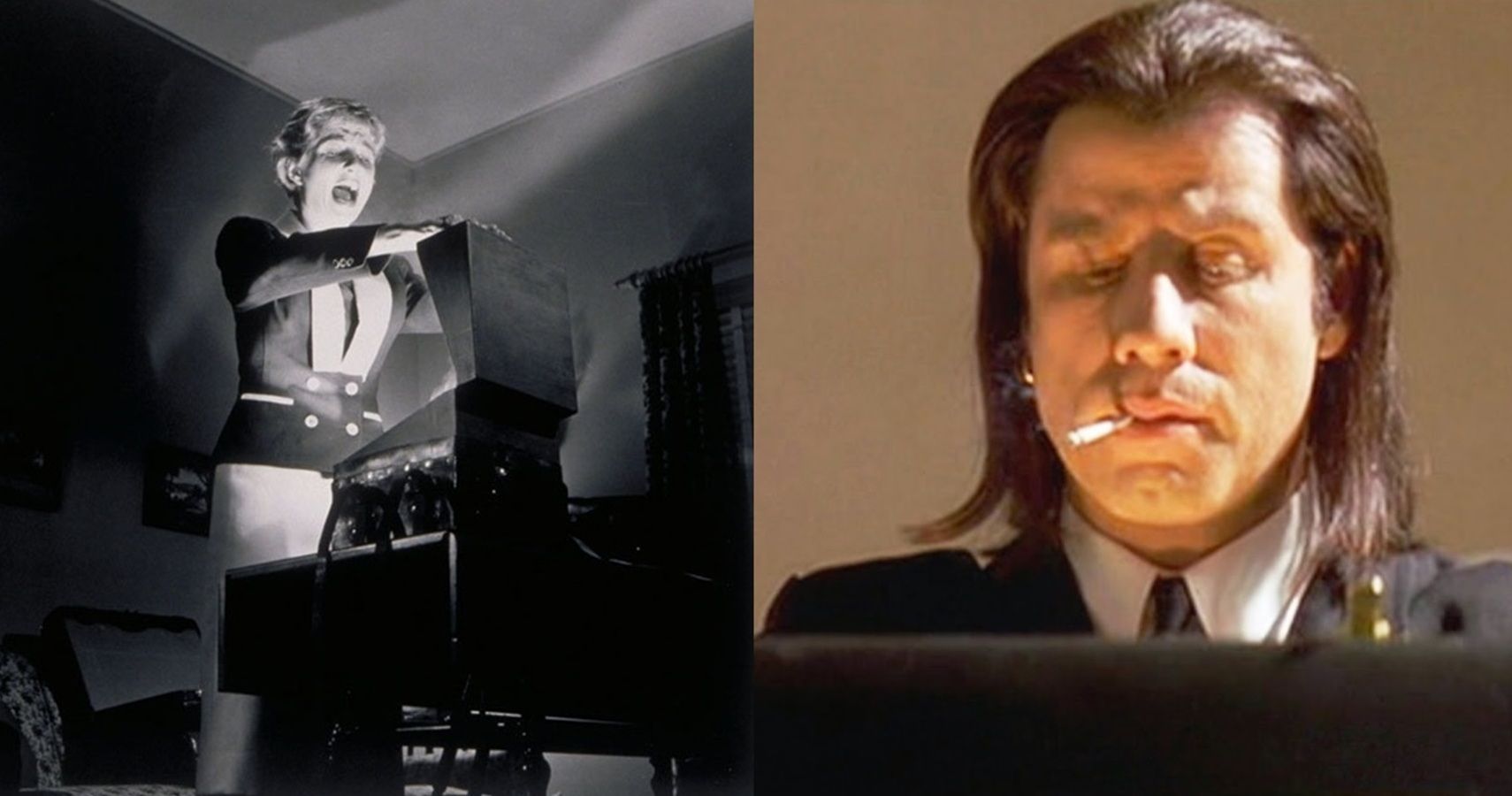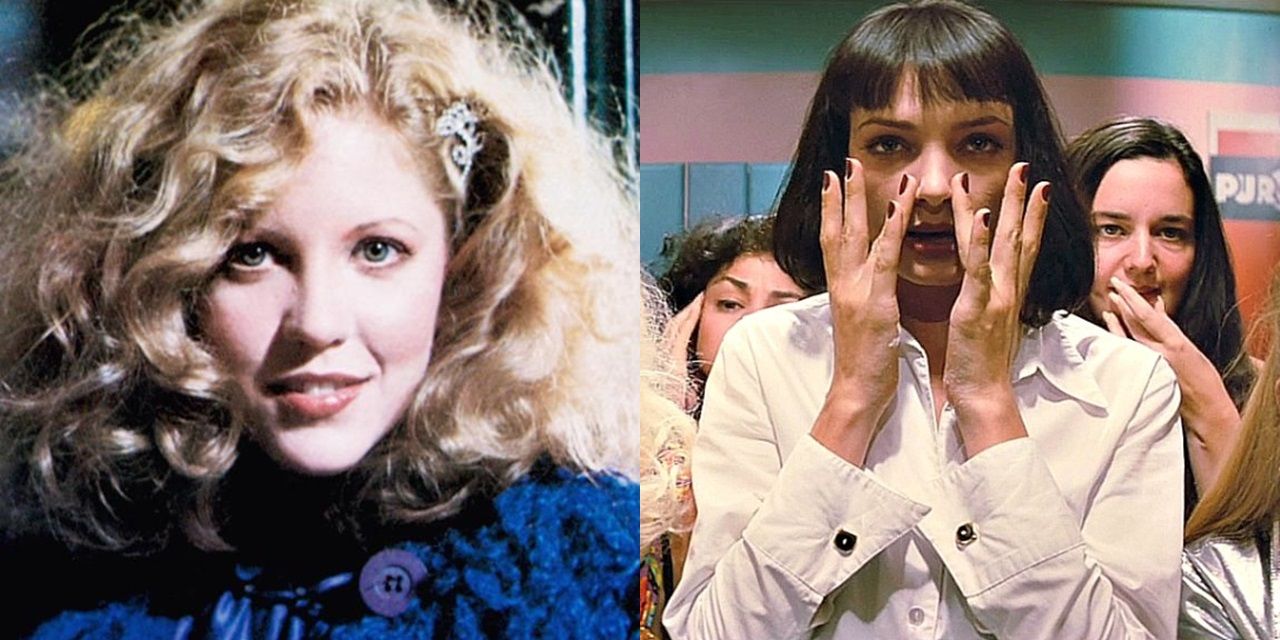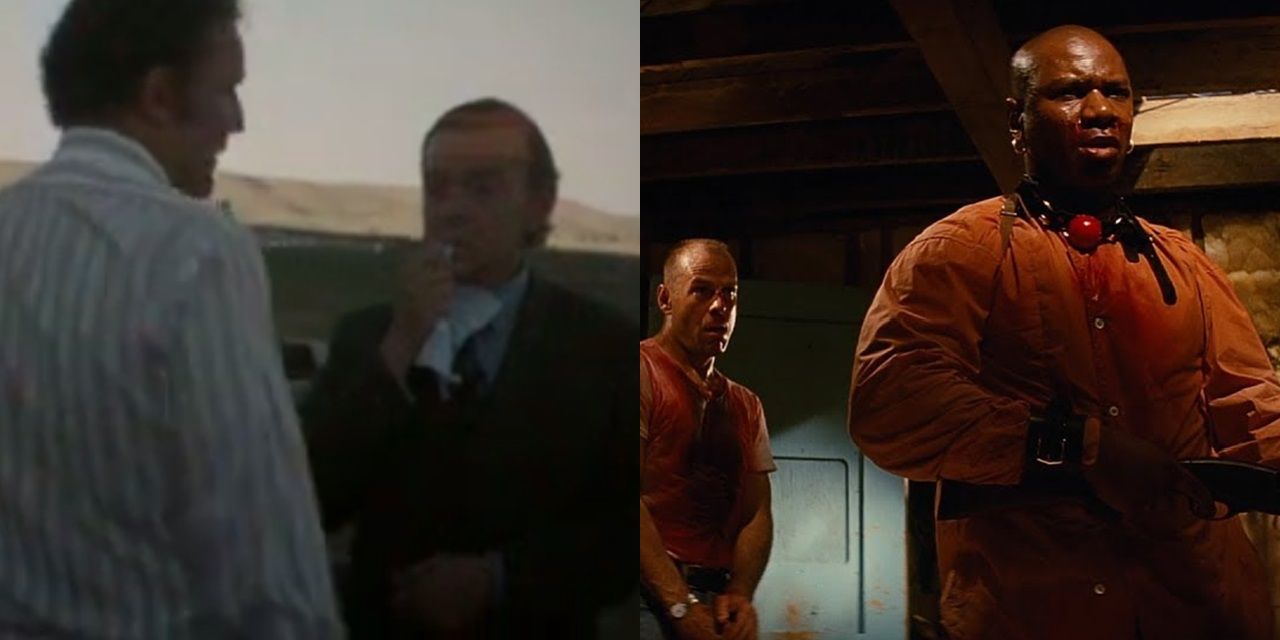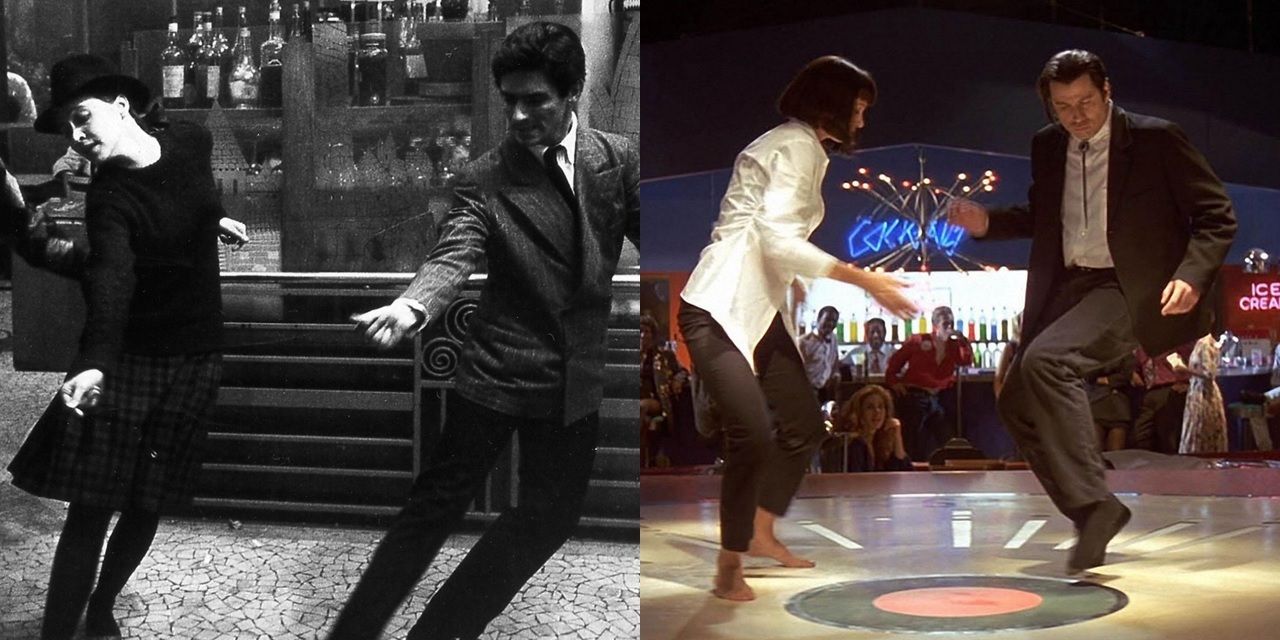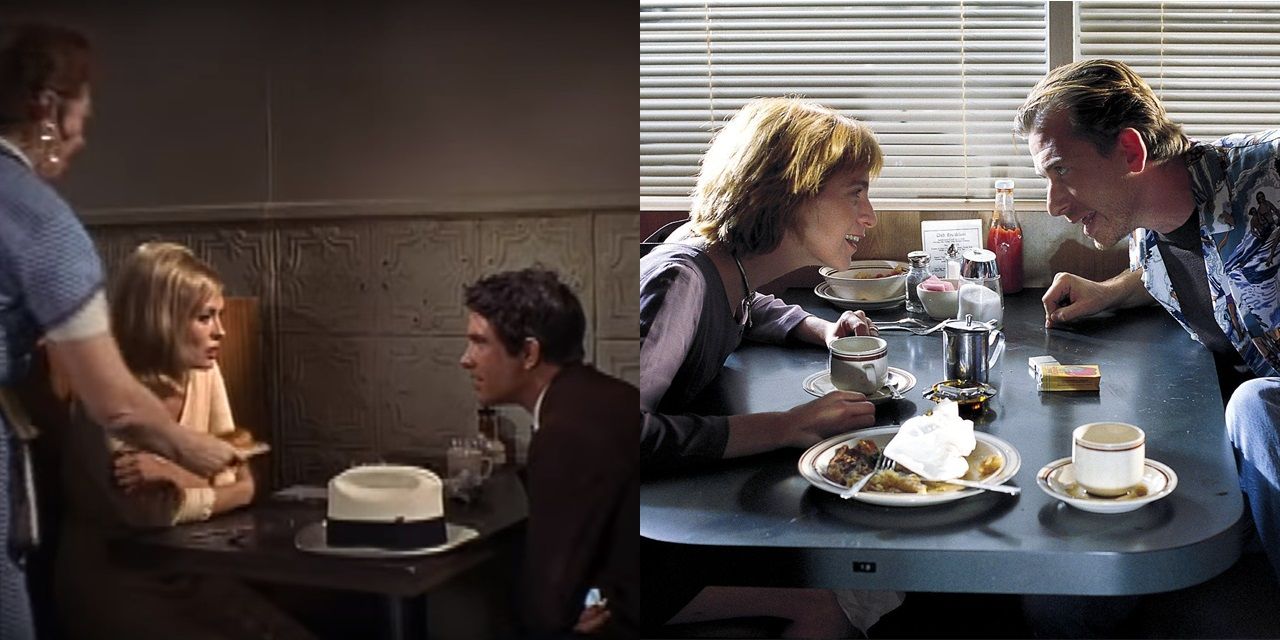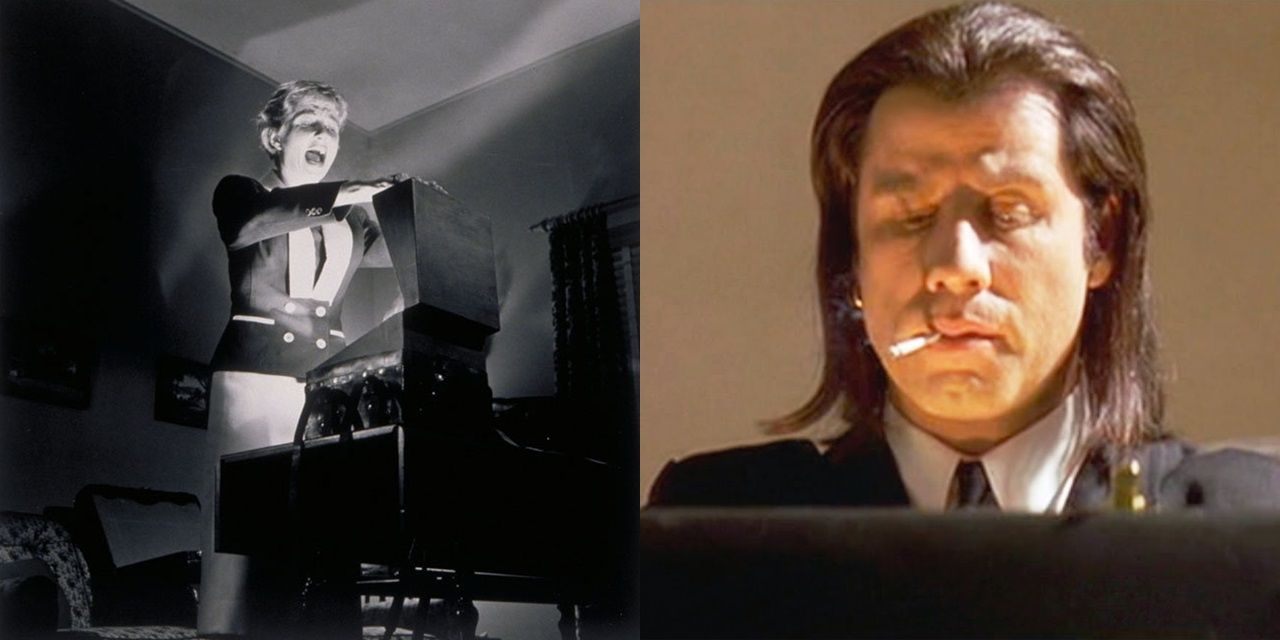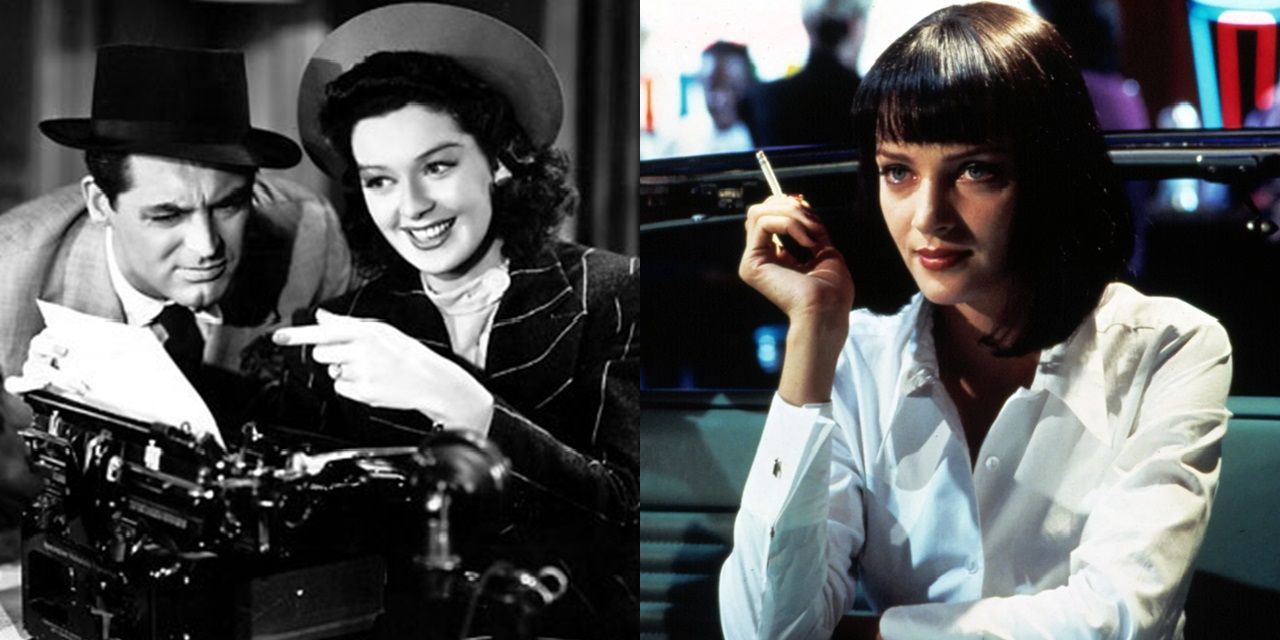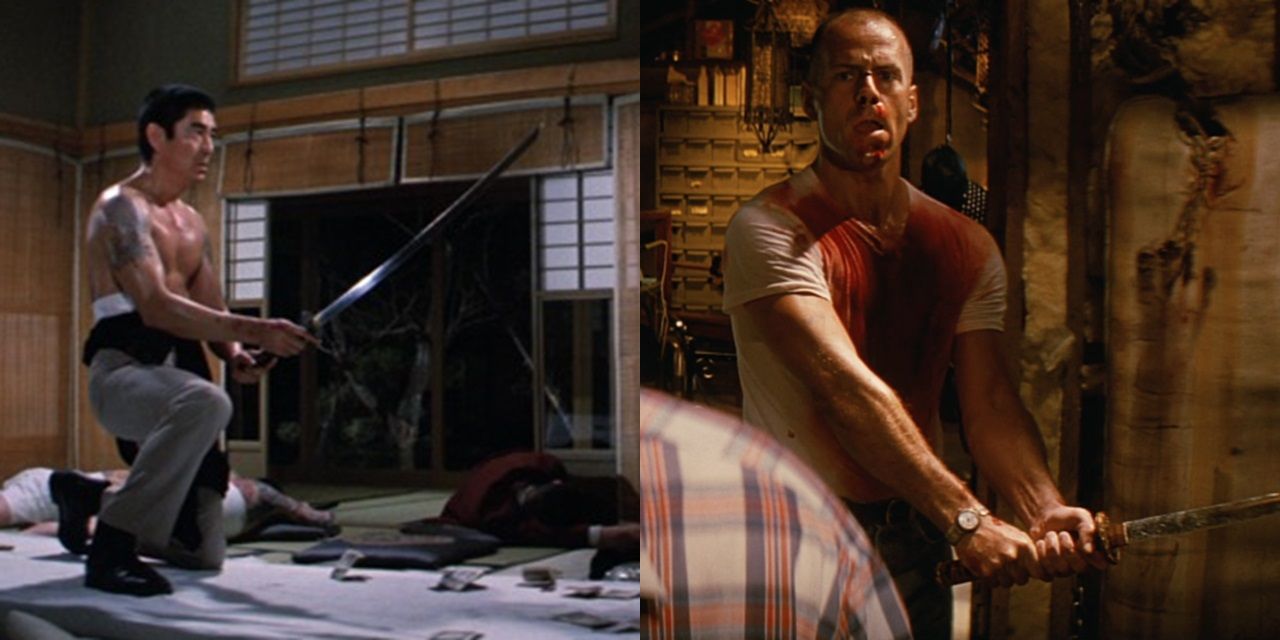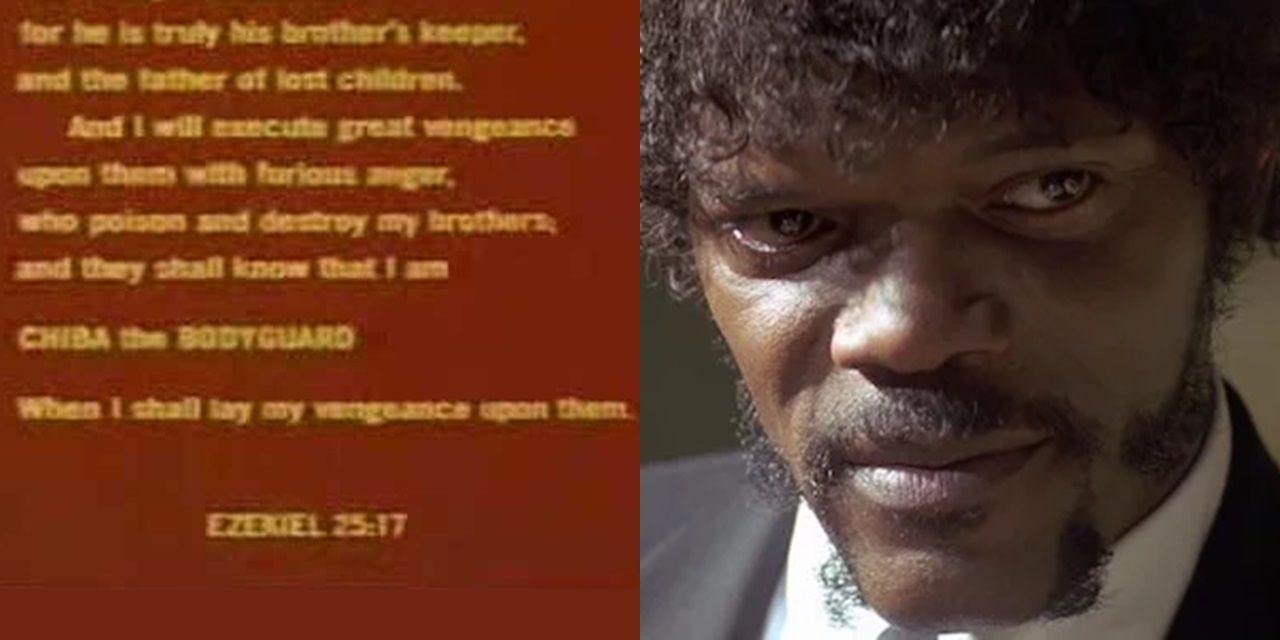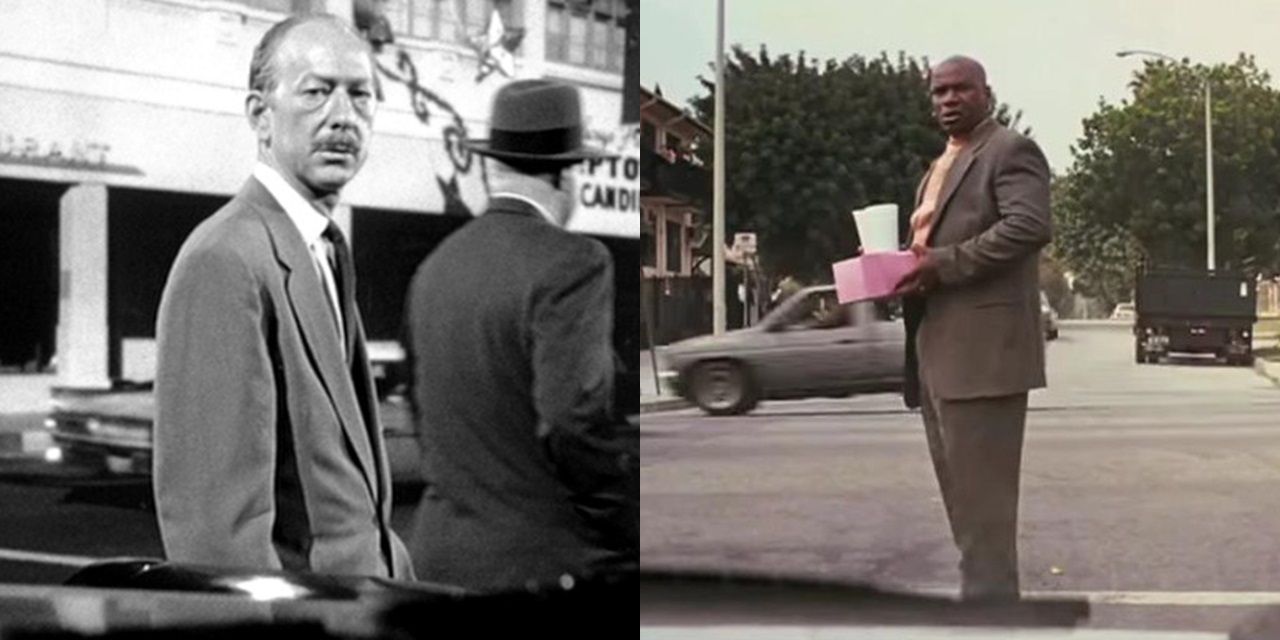Quentin Tarantino makes postmodern movies (despite the fact that the definition of the term “postmodern” is so broad that it could apply to pretty much any movie that gets made today) in that they rely on your knowledge of earlier movies to create an emotional response.
Tarantino will often repeat a shot, line of dialogue, or musical cue from a Jean-Luc Godard movie or a Sergio Leone, supplanting their characters and tone with his own to recontextualize an already-familiar image, phrase, or piece of music. The director’s sophomore effort, Pulp Fiction, is filled with these kinds of references. So, here are Pulp Fiction’s 10 Best Movie References, Ranked.
Dressed to Kill
While Mia and Vincent are waiting for their food to arrive in Jack Rabbit Slim’s, she tells him, “I’m gonna go to the bathroom and powder my nose.” This is a riff on a line from Brian De Palma’s 1980 erotic neo-noir slasher Dressed to Kill, in which Liz Blake (played by Nancy Allen) says, “I’m gonna go powder my nose, and when I come back, I hope to find your clothes right next to mine.”
In Pulp Fiction, Mia uses it as a euphemism for snorting cocaine, establishing her coke habit ahead of the fateful moment when she mistakes Vincent’s heroin for coke and promptly overdoses.
Charley Varrick
In the infamous basement assault scene, Butch reluctantly returns to save Marsellus from Maynard and Zed, slashing down Maynard with a samurai sword and letting Marsellus blow a hole in Zed’s torso with a shotgun.
Marsellus’ subsequent line about calling a couple of friends over to “go to work on the homes here with a pair of pliers and a blowtorch,” is paraphrased from the underrated 1973 Don Siegel action movie Charley Varrick, in which Maynard Boyle (who may have served as the namesake for the “spider” who “caught a couple o’ flies”) says, “They’ll strip you naked and go to work on you with a pair of pliers and a blowtorch.”
The Warriors
Taking a comic book approach to gangland warfare, Walter Hill’s cult classic The Warriors has provided inspiration for a number of modern genre filmmakers. Quentin Tarantino is clearly among them, as he imitates a couple of shots from The Warriors in Pulp Fiction: a closeup of a character’s lips as they speak into a microphone, and a closeup of a needle being placed on a vinyl record.
In Pulp Fiction, these shots are used to build a mystique around Mia Wallace and set the mood with a Dusty Springfield classic before Uma Thurman’s iconic character makes her first on-screen appearance.
Bande À Part
The cinematography and choreography of Mia Wallace and Vincent Vega’s dance at Jack Rabbit Slim’s, set to Chuck Berry’s “You Never Can Tell,” are a direct reference to a scene in Jean-Luc Godard’s French New Wave classic Bande à part in which Arthur, Odile, and Franz spontaneously decide to dance in a crowded café.
This scene has been dubbed “the Madison scene,” referring to the “Madison” novelty dance style that appears in the sequence (and the one in Pulp Fiction) and was popular in the late ‘50s and early ‘60s. Quentin Tarantino also named his production company, A Band Apart, after Bande à part.
Bonnie and Clyde
The opening diner scene in which Pumpkin and Honey Bunny discuss robbing a diner is shot very similarly to the diner scene in Arthur Penn’s Bonnie and Clyde. The closeups are framed the same way, and there’s a wide shot whenever the waitress comes over. This immediately establishes Pumpkin and Honey Bunny’s relationship. They’re a lot like Bonnie and Clyde: partners in crime who are also deeply in love with each other.
The scene in Bonnie and Clyde doesn’t end with the titular duo sticking up the diner; that’s something extra that Tarantino added to immerse us in the world of Pulp Fiction.
Kiss Me Deadly
The MacGuffin in Pulp Fiction (a MacGuffin in the true sense, because it has no bearing on the plot and is just there to get the characters from point A to point B, unlike the One Ring and the Infinity Stones, which are integral to the story) is the mysterious briefcase that Jules and Vincent collect and bring to Marsellus Wallace.
We never see what’s inside the briefcase, but anyone who opens it is illuminated by a golden glow as they stare inside it in awe. This is a reference to the mysterious box at the center of the classic 1955 film noir Kiss Me Deadly. Everyone has their own theory on what’s in the briefcase.
His Girl Friday
Mia Wallace’s line “Could you roll me one of those, cowboy?” is taken almost verbatim from Howard Hawks’ classic 1940 screwball romantic comedy His Girl Friday. This establishes that Vincent and Mia have the same kind of flirtatious banter that Cary Grant and Rosalind Russell have in that movie, along with the idea that their flirtations are “forbidden” (Russell’s character is engaged; Mia is married).
Tarantino has ranked His Girl Friday among his favorite movies of all time — and that’s saying a lot, because he’s seen a lot of movies. A Hawks-esque screwball comedy is one of many genres that Tarantino has mentioned the possibility of dabbling in.
Walking Tall/The Texas Chain Saw Massacre/The Yakuza
When Butch is leaving the pawn shop, having escaped from the basement, he hears Marsellus’ cries of pain and can’t leave him behind. So, he decides to go back down there and save him. First, he samples the weapons that the pawn shop has to offer.
Each one of these weapons is an Easter egg referencing a violent ‘70s classic: the baseball bat is a reference to the 1973 action thriller Walking Tall; the chainsaw is a reference to Tobe Hooper’s grisly horror masterpiece The Texas Chain Saw Massacre; and the samurai sword, the weapon that Butch eventually chooses, is a reference to the 1974 neo-noir The Yakuza.
Karate Kiba (The Bodyguard)
Quentin Tarantino’s movie-verse is so deeply immersed in the world of genre cinema that its Bible was written by Sonny Chiba. It’s common for film buffs, when they come across a copy of the Bible in a hotel room or something, to search for the Ezekiel 25:17 passage that Samuel L. Jackson recites in Pulp Fiction. But what they’ll find in the Bible isn’t what Jackson says in the movie.
Instead, Tarantino’s script paraphrased the Ezekiel 25:17 speech from the American version of Chiba’s 1973 martial arts movie Karate Kiba. Tarantino made a few tweaks: mostly notably, swapping out “I am Chiba the Bodyguard” for “my name is the Lord.”
Psycho
The shot through Butch’s windshield of Marsellus Wallace crossing the street and turning to face the driver is taken straight from Alfred Hitchcock’s Psycho. In Psycho, this shot is significant because Marion Crane is embezzling $40,000 from her boss and he’s just spotted her skipping town with the money.
In Pulp Fiction, it’s significant because Butch thought he was off scot-free, having killed Vincent and taken his father’s watch from his apartment. But Marsellus, who wants Butch dead and has simply gone out to get donuts and coffee, sees him leaving the complex. Instead of keeping his cool like Marion did, Butch slams down on the gas and runs Marsellus over, leading to an intense action scene.

